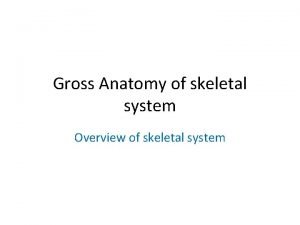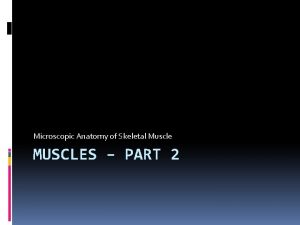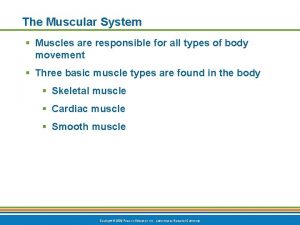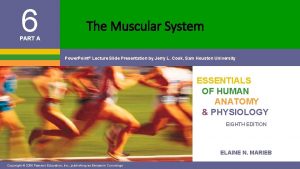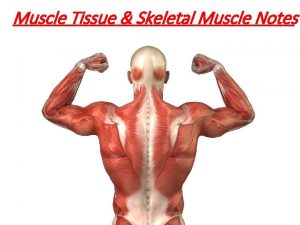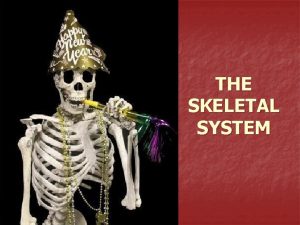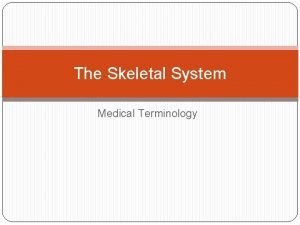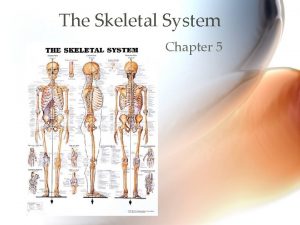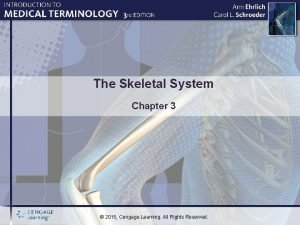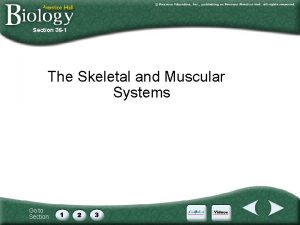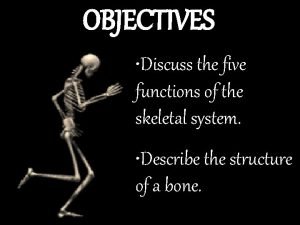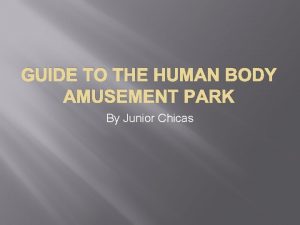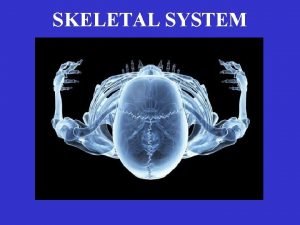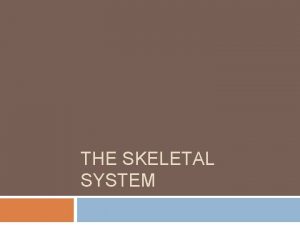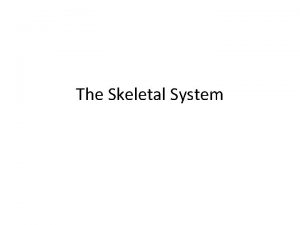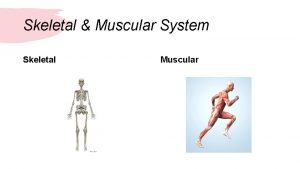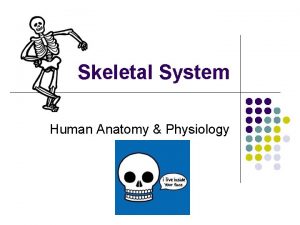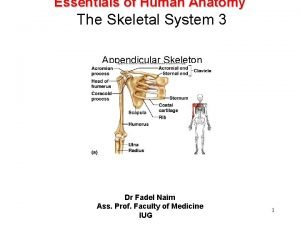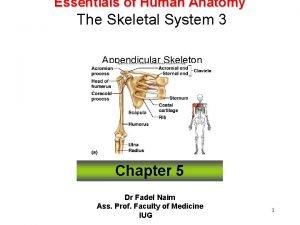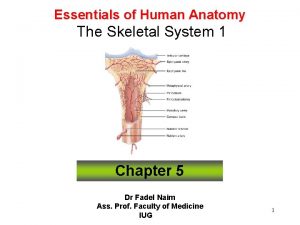Essentials of Human Anatomy The Skeletal System 2

















- Slides: 17

Essentials of Human Anatomy The Skeletal System 2

Joints • It is the site where two or more bones come together, where there is movement or not.

Function q Holds bones together q Allows bones to move q All bones articulate except the hyoid

Classification of Joints q Fibrous Joints Dense connective tissues connect bones between bones in close contact q Cartilaginous Joints Hyaline cartilage or fibrocartilage connect bones q Synovial Joints Most complex allow free movement q Synarthrotic immovable q Amphiarthrotic slightly movable q Diarthrotic freely movable

FIBROUS JOINTS • The articulating surfaces are joined by fibrous tissue. • Very little movement is possible. • E. G : v Sutures of the vault of the skull. v Inferior tibiofibular joints. v Tooth in jawbone

CARTILAGENOUS JOINTS A. Primary Cartilagenous • The bones are united by a plate of hyaline cartilage. • E. G : v Between the Epiphysis and Diaphysis of a growing bone. v Between the first rib and the sternum.

CARTILAGENOUS JOINTS B. Secondary Cartilagenous • The bones are united by a plate of fibrocartilage. • Their articulating surfaces are covered by a thin plate of hyaline cartilage. • E. G : v joints between the vertebral bodies. v Symphysis pubis.

SYNOVIAL JOINT • It has a great degree of freedom of movement. • The articulating bones are covered by hyaline cartilage and separated by a joint cavity. • The cavity is lined by synovial membrane. • It is protected on the outside by a tough fibrous capsule. • The synovial membrane produces a lubricating fluid (synovial fluid)

General Anatomy of Synovial Joints • Basic features: varticular capsule vjoint cavity vsynovial fluid varticular cartilage vligaments vnerves vblood vessels

Types of Synovial Joints • From least movable to most freely movable, the six specific types of synovial joints are: § planar (gliding) joints § hinge joints § pivot joints § condyloid (ellipsoid) joints § saddle joints § ball-and-socket joints

Types of Synovial Joints Ball-and-Socket Joint hip shoulder Condyloid Joint between metacarpals and phalanges

Types of Synovial Joints Gliding Joint between carpals between tarsals Hinge Joint elbow between phalanges

Types of Synovial Joints Pivot Joint between proximal ends of radius and ulna Saddle Joint between carpal and metacarpal of thumb

Mobility and Stability in Joints • Motion permitted ranges from none to various extensive motions. • Structure determines both its mobility and its stability. – more mobile = less stable

Types of Joint Movements • Abduction /Adduction • Dorsiflexion / Plantarflexion • Flexion / Extension / Hyperextension

Types of Joint Movements • Rotation / Circumduction • Supination / Pronation

Types of Joint Movements • Eversion / Inversion • Protraction / Retraction • Elevation / Depression
 Sally left the party to take cathy home
Sally left the party to take cathy home Anatomy and physiology chapter 8 skeletal system
Anatomy and physiology chapter 8 skeletal system Microscopic anatomy of skeletal muscle
Microscopic anatomy of skeletal muscle Microscopic anatomy of skeletal muscle figure 6-2
Microscopic anatomy of skeletal muscle figure 6-2 Chapter 6 the muscular system figure 6-9
Chapter 6 the muscular system figure 6-9 Microscopic anatomy of skeletal muscle
Microscopic anatomy of skeletal muscle Anatomy of skeletal muscle
Anatomy of skeletal muscle Operating system concepts essentials
Operating system concepts essentials Operating system concepts essentials
Operating system concepts essentials What are the five functions of the skeletal system
What are the five functions of the skeletal system Medical terminology skeletal system
Medical terminology skeletal system Skeletal system
Skeletal system The skeletal system learning exercises
The skeletal system learning exercises Chapter 7:4 skeletal system
Chapter 7:4 skeletal system Chapter 5 the skeletal system
Chapter 5 the skeletal system Section 36-1 the skeletal system
Section 36-1 the skeletal system What are the five functions of the skeletal system?
What are the five functions of the skeletal system? Human body park
Human body park
